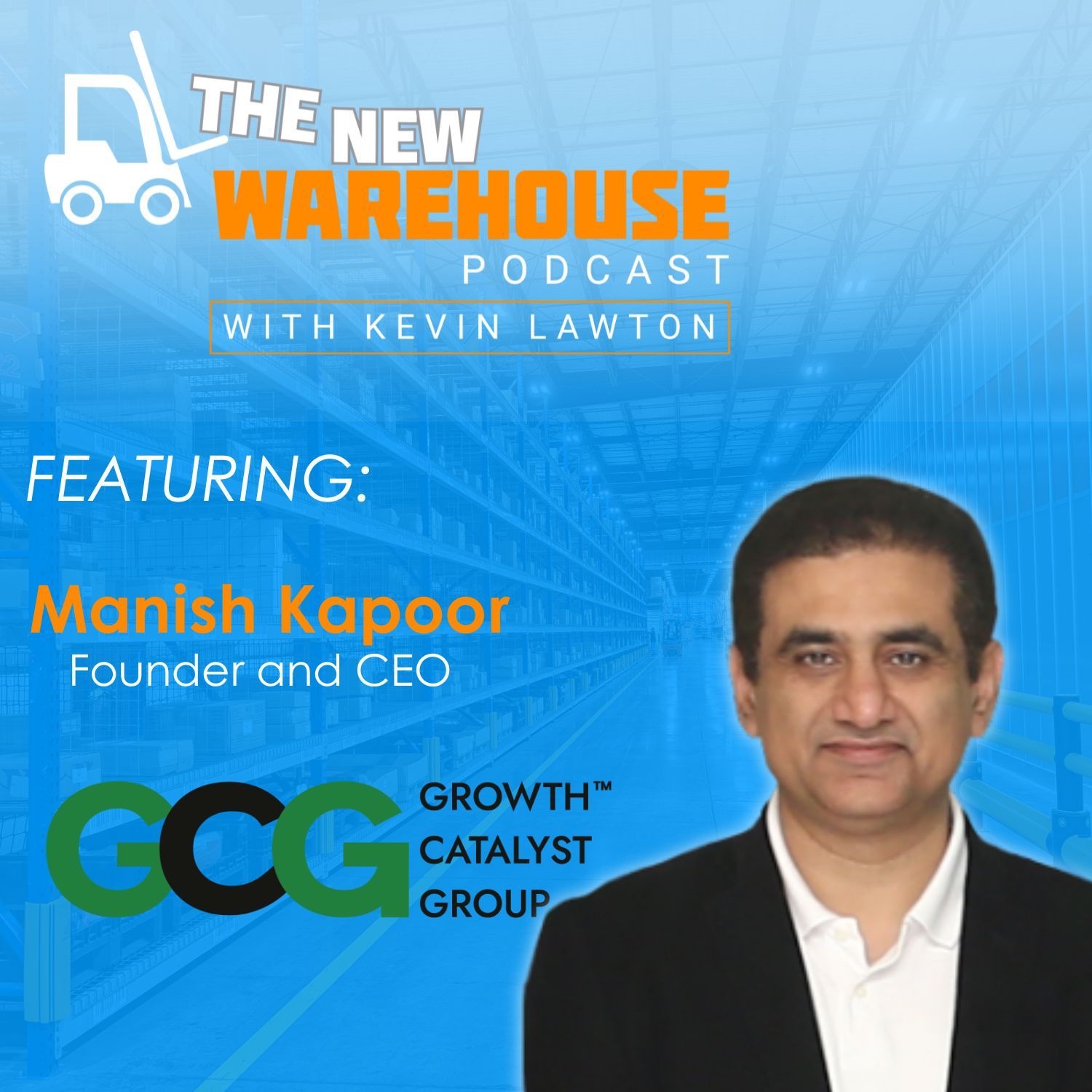
608: Growth Catalyst Group on Supply Chain Resilience
In this episode of The New Warehouse Podcast, Kevin chats with Manish Kapoor, founder and CEO of Growth Catalyst Group (GCG), a dynamic network of supply chain-focused companies helping businesses scale with technology, process, and strategy.
The conversation spans the shift from traditional distribution centers to omnichannel fulfillment, adapting to global disruptions such as tariffs and pandemics, and why the best supply chains are flexible, provide visibility, and have customer needs at the core.
From FedEx and Amazon to Growth Catalyst
Drawing on over 20 years of experience at companies like Amazon and FedEx, Manish shares how his team now empowers brands through GCG’s three branches: Advatix (consulting and technology), XPDEL (SMB 3PL services), and Archway (Fortune 500 in-store marketing fulfillment). Reflecting on GCG’s founding eight years ago, he shares: “Fun for us is when we help companies scale their business.” Through Advatix, XPDEL, and Archway, the team supports a diverse range of companies, from high-growth startups to Fortune 500s.
GCG’s portfolio reflects this ambition. Archway supports in-store marketing for major retailers, such as Starbucks. XPDEL helps small and mid-sized brands scale eCommerce and B2B operations. And Advatix offers global consulting, custom-fit tech platforms, and a command center approach to visibility. “We are, and our goal is to be, a one-stop shop for supply chain innovation globally,” adds Manish.
Redesigning Warehousing for Supply Chain Resilience
Retailers no longer have the luxury of a linear supply chain, where they push products directly to stores. The rise of e-commerce shifted power to the consumer. As Manish puts it: “Now it’s shifted to fulfillment centers…because you’re actually fulfilling for eaches.” That shift from pallets to parcels has changed everything from warehouse layout to inventory strategy.
Traditional 3PLs served B2B. Now, leaders must support both B2B and direct-to-consumer (DTC) from the same facilities. According to Manish, the most competitive players can turn a truckload into both retail casepacks and DTC orders: “If I get a truckload of a certain product SKU…I want to apply the right technology to support both.”
However, that transformation requires more than just desire; it necessitates data, flexible software, and a profound understanding of your customers. Manish emphasizes starting with service level expectations: “Do your customers really need same-day, next-day, or are they okay with five-day delivery?” From there, companies can design networks, select optimal sites, and develop processes based on real customer needs, rather than relying on guesswork.
Resilient Supply Chains Embrace Change
Manish sees supply chain resilience as the true hallmark of a strong supply chain. Rather than reacting to crises like tariffs or COVID, he urges leaders to prepare for constant disruption. “We actually say embrace the changes…these changes as a challenge just shows that you’re not prepared.”
One example: the shift to multi-sourcing. With tensions between the U.S. and China, businesses are diversifying their operations. Nearshoring is a popular term, but Manish notes that even Mexico and Canada pose uncertainties. “You don’t want to put all eggs in one basket.” Still, reshoring takes time, investment, and strategic clarity.
Cost pressures are also changing consumer behavior. Manish sees buyers willing to wait longer or consider used goods to avoid premium shipping costs: “That’s driving the consumer behavior to shift as well.” Inflation, capital costs, and operational efficiency are intertwined now more than ever.
To keep up, companies must stay plugged in. Whether through internal teams or strong partners, it’s essential to track new technology, weigh buy, build, or partner decisions, and maintain a continuous improvement mindset. As Manish puts it: “Technology should support the most optimized operating processes—not the other way around.”
Key Takeaways on Supply Chain Resilience
- Consumer demand has shifted supply chains from a push-based distribution model to a pull-based fulfillment model.
- The most competitive 3PLs today support both B2B and DTC from shared inventory, utilizing flexible technology.
- Tariffs, inflation, and global tensions have made resilience and adaptability top priorities.
- Businesses must define customer service levels before designing their network or investing in tech.
- Continuous improvement, flexible architecture, and process-first tech adoption are essential for staying competitive.
- AI is already improving command centers, call centers, and even signage compliance in stores.
Listen to the episode below and leave your thoughts in the comments.
Guest Information
Follow Growth Catalyst Group on LinkedIn and visit their website.
To connect with Manish on LinkedIn, click here.
For more information about resilient supply chains, check out the podcasts below.
Supply Chain Point: Solving Logistics Challenges with Nish George
Supply Chain Point: People First Supply Chain Transformation
600: Creating Value in Return Processing with Maven Circular

B2B
[…] Packaging Digest Reuters Stockpiling goods Reuters- Shein The New Warehouse […]